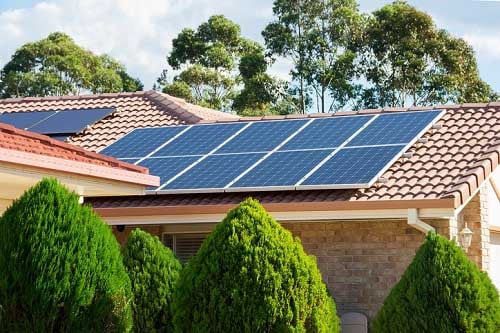Homebuyers and owners across the country are interested in solar panels, but interest may clash with other regional concerns about housing affordability

Americans looking to buy new homes aren’t just interested in granite countertops, stainless steel appliances, abundant closet space, and a white picket fence. They want solar panels on their roofs.
A recent poll shows that 70% of American adults would support a nationwide mandate requiring solar panels to be installed on all newly built homes. The survey, conducted by CITE Research on behalf of Vivint Solar, a leading full-service residential solar provider, also revealed significant others and environmental experts are the most influential when deciding to install residential solar for the good of the environment, while politicians are the least influential by far.
Although survey respondents were spread throughout the country, Western states showed the most enthusiasm, with 74% of participants supporting rooftop-solar mandates. Support ran strong even in states without strong environmental policies; 68% of people in the South backed mandates.
Builders are not able to keep up with demand for housing across the country, and an added demand for solar power poses a challenge when it comes to keeping building costs low. But there could be a payoff for builders as well.
“Builders will need to determine how best to market this to their buyers. However, studies have shown that solar homes sell for a higher price (Adomatis & Hoen 2015) and sell more quickly than homes without PV (Dakin, Springer & Kelly 2008),” the California Energy Commission (CEC) analysis said. “In addition, many of the major solar contractors offer sales and marketing support to builders.”
From a builder perspective, installing solar at the same time as home construction can cut costs significantly, making it much less expensive than a homeowner installing solar separately later down the road. Everything from building materials to roof design to integrating solar with other systems in the home are also made easier when done during the initial construction phase.
A Zillow study confirms that homes with solar energy systems sell for 4.1% more than those homes without. And although the average home cost of solar panels is lowest in Florida in terms of average cost per watt, the biggest gains in home prices have been recorded in New York and California.
In May 2018, California became the first state in the country to mandate rooftop solar panels on homes , including multi-family buildings, built beginning in 2020, an update to the state’s Building Energy Efficiency Standards. The new standards are expected to boost residential solar sales 14% from 2020-2023, according to an analysis from GTM Research.
The mandate will cost homeowners additional $8,000-$12,000 upfront, according to an analysis done by the CTE, although they will save twice that much over the lifetime of the house through lower energy bills. Still, California is already plagued by high house prices that are effectively a barrier to middle- and low-income buyers.
There are even programs that will allow homebuyers to finance solar panels into the cost of their mortgage. Like everything else, these programs vary be lender and state, although we can expect to see more of them popping up here and there as borrower demand—or state mandate—increases.
Homebuyers, homeowners, and business owners alike also have a short time left to take advantage of the investment tax credit for solar, one of the biggest energy tax credits available. This credit applies both to solar panel systems and solar hot water systems and is worth 30 percent of the cost of buying and installing a solar system until the end of 2019, after which the value reduces by a few percentage points a year until 2022, when it goes away entirely for homeowners and falls to 10 percent for commercial system owners. Homebuyers and owners should also check to see if any more energy credits are offered on their individual state level.



